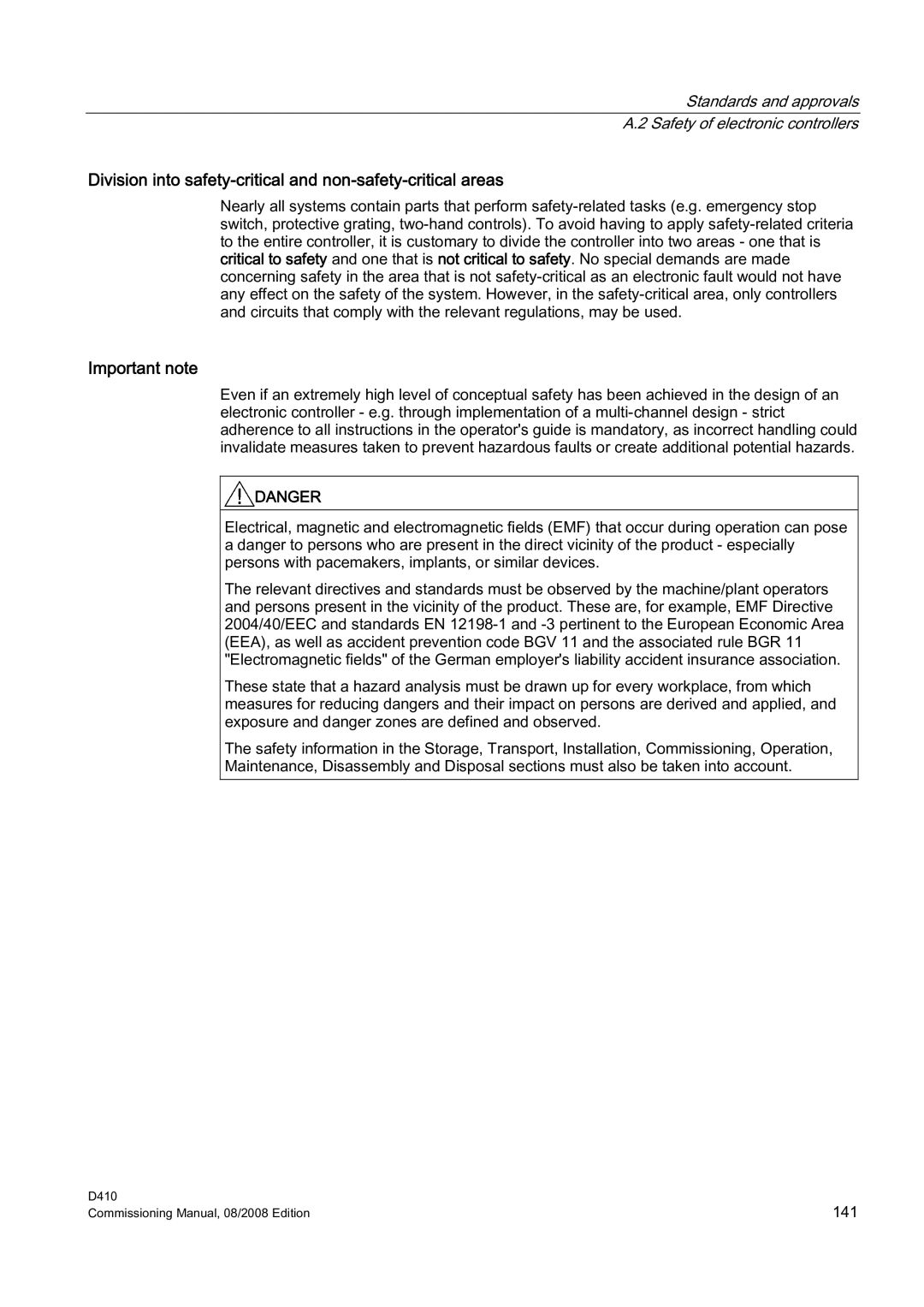
Standards and approvals
A.2 Safety of electronic controllers
Division into safety-critical and non-safety-critical areas
Nearly all systems contain parts that perform
Important note
Even if an extremely high level of conceptual safety has been achieved in the design of an electronic controller - e.g. through implementation of a
![]() DANGER
DANGER
Electrical, magnetic and electromagnetic fields (EMF) that occur during operation can pose a danger to persons who are present in the direct vicinity of the product - especially persons with pacemakers, implants, or similar devices.
The relevant directives and standards must be observed by the machine/plant operators and persons present in the vicinity of the product. These are, for example, EMF Directive 2004/40/EEC and standards EN
These state that a hazard analysis must be drawn up for every workplace, from which measures for reducing dangers and their impact on persons are derived and applied, and exposure and danger zones are defined and observed.
The safety information in the Storage, Transport, Installation, Commissioning, Operation, Maintenance, Disassembly and Disposal sections must also be taken into account.
D410 | 141 |
Commissioning Manual, 08/2008 Edition |
